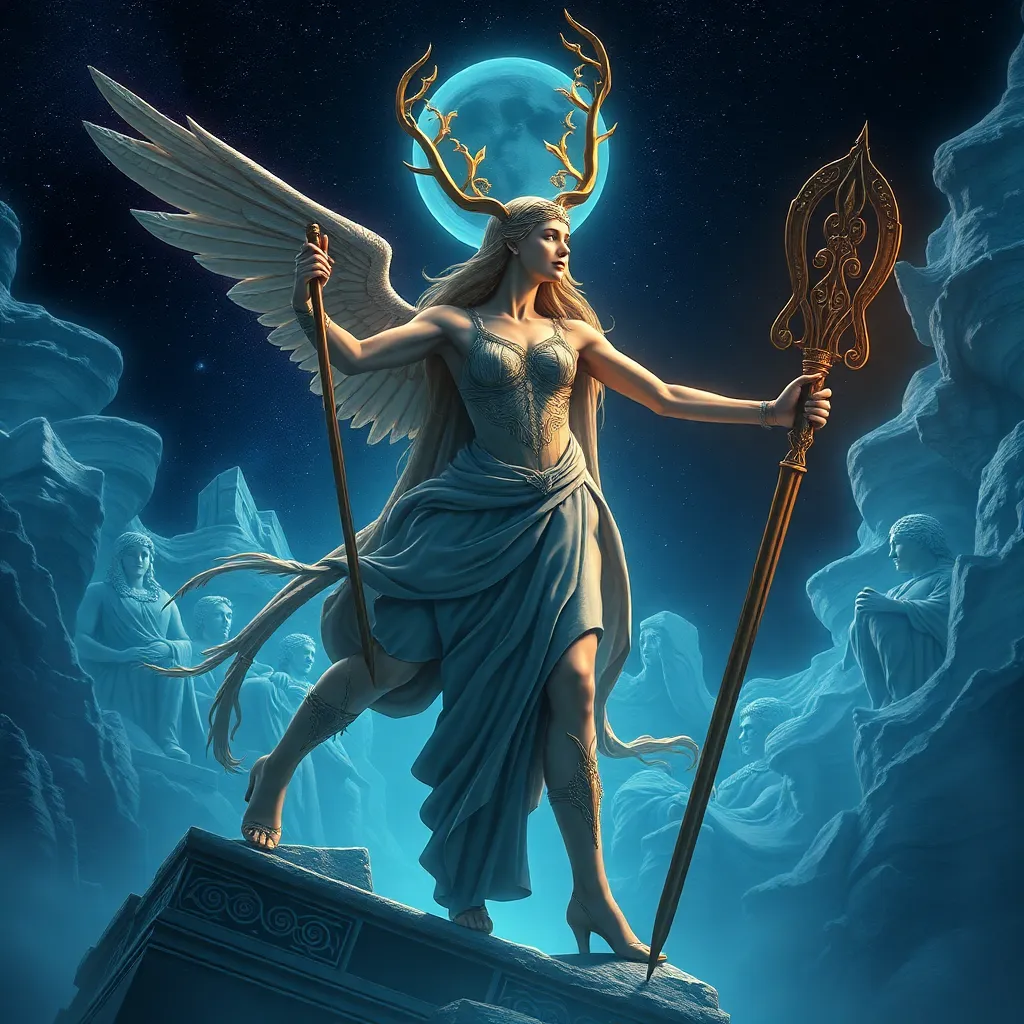Artemis and the Concept of the Guardian in Mythology
I. Introduction
Artemis, one of the most revered goddesses in Greek mythology, holds a unique place as a multifaceted figure embodying protection and independence. As the goddess of the hunt, wilderness, and childbirth, she is intricately connected to both nature and the human experience. Throughout ancient narratives, Artemis symbolizes the guardian archetype, offering both protection and nurturing qualities.
This article aims to explore the concept of guardianship within mythology, focusing specifically on Artemis as a principal guardian figure. We will delve into her mythological background, her role as a protector of the wild and women, her representation in art and literature, and her relevance in contemporary society.
II. The Mythological Background of Artemis
Artemis was born to Zeus and Leto, making her the twin sister of Apollo. Her birth story is a testament to her strength and independence; she was born first and assisted her mother in the birth of her brother, showcasing her role as a protector from the very beginning.
Among her key attributes, Artemis is often associated with:
- The moon, symbolizing her connection to femininity and nature.
- A bow and arrows, representing her prowess as a huntress.
- Animals, particularly deer and bears, which are sacred to her.
As one of the twelve Olympian gods, Artemis holds significant power and influence, often depicted as a fierce and independent deity who defies traditional gender roles.
III. Artemis as the Protector of the Wild
Artemis’s connection to nature is profound, making her the quintessential guardian of the wild. She is often portrayed roaming the forests, accompanied by a retinue of nymphs and animals. Her role as a protector extends to the preservation of wildlife and natural spaces.
Several myths highlight her dedication to protecting animals, including:
- The story of Actaeon, a hunter who accidentally spied on Artemis while she bathed. In her wrath, she transformed him into a stag, leading to his death by his own hunting dogs.
- The tale of the Calydonian Boar, where Artemis sent a monstrous boar to ravage the land because the king failed to honor her.
The significance of her sacred spaces is also noteworthy. Groves, caves, and springs dedicated to Artemis were considered hallowed ground, where her divine protection ensured the flourishing of wildlife and the natural environment.
IV. The Guardian of Women and Children
In ancient Greece, Artemis played a vital role in the lives of women, particularly concerning childbirth and fertility. As a goddess associated with the transition from girlhood to womanhood, she was revered by women seeking protection in childbirth.
Myths surrounding childbirth and fertility often link to Artemis, such as:
- The story of her aiding women in labor, ensuring safe deliveries and the health of both mother and child.
- Her association with the cult of Artemis, where women would pray for her blessings during pregnancy and childbirth.
Artemis embodies a duality in her protective nature; she is nurturing yet fierce. While she fiercely defends her domain and those she protects, she also provides solace and support to women, embodying the archetype of the guardian in both nurturing and protective aspects.
V. The Concept of the Guardian in Global Mythologies
Artemis’s role as a guardian can be compared to other figures in mythology, such as:
- Athena: The goddess of wisdom and warfare, who also embodies protection, particularly in warfare and civic matters.
- Hecate: The goddess of magic and witchcraft, often seen as a guardian of the crossroads and a protector against malevolent forces.
Common themes in guardianship across cultures include:
- The duality of nurturing and fierce protection.
- The connection to nature and wildlife.
- The role of female figures in safeguarding life and community.
The evolution of the guardian archetype continues in modern interpretations, where figures like Artemis inspire discussions around feminism, environmentalism, and the protection of vulnerable populations.
VI. Artemis in Art and Literature
Throughout history, Artemis has been represented in various forms of art and literature. Ancient sculptures often depict her as a young huntress, with her bow and arrows, symbolizing her independence and strength.
In literature, Artemis’s guardian aspects have been portrayed in various ways:
- In Homeric hymns, where her protective nature is celebrated.
- In modern adaptations, where she is reimagined as a symbol of female empowerment.
Her lasting impact on contemporary culture is evident in various forms, from films and books to art that reinterprets her mythos for modern audiences.
VII. Relevance of Artemis in Today’s Society
Modern interpretations of Artemis as a guardian figure resonate deeply in today’s society. Her image is often invoked in discussions surrounding:
- Women’s rights and empowerment, as she represents independence and strength.
- Nature conservation and wildlife protection, reflecting her role as a protector of the wild.
The influence of her mythology can be seen in contemporary feminist movements, where her archetype serves as a model for strength, autonomy, and guardianship over one’s body and environment.
VIII. Conclusion
Artemis’s significance as a guardian in mythology is profound, embodying the qualities of protection, independence, and nurturing. Her legacy endures through the archetype of the guardian, influencing both ancient narratives and modern interpretations.
As we reflect on the importance of guardianship in both ancient and modern contexts, Artemis remains a powerful symbol of protection, reminding us of our connection to nature, the empowerment of women, and the ongoing need for guardianship in our world.




